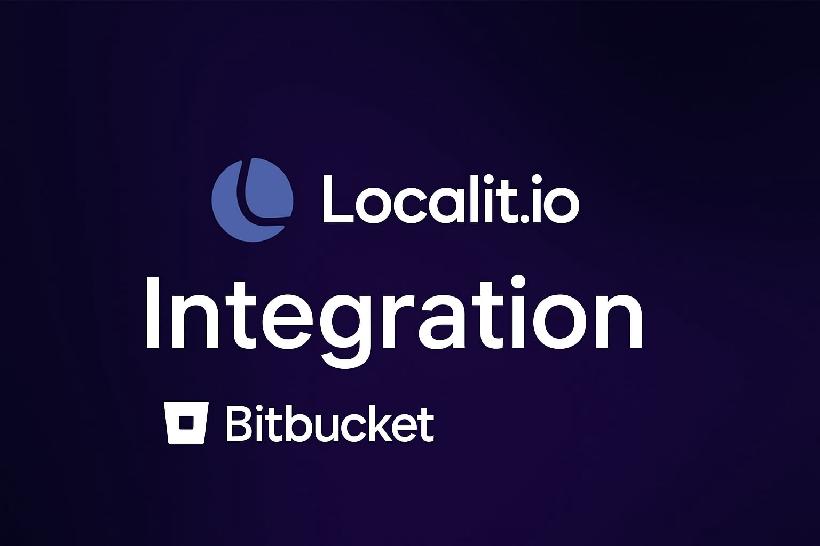Latin America is the perfect business region that is just waiting to be conquered. Its astonishing potential and amazing opportunities will seduce even the most profitable of businesses. Because, let's face it, the sky's the limit in the world of profits. The region's rapidly growing population and increasing economic might put it to the very top of the list of potential business scaling destinations for companies and startups globally. The main problem, however? The need to translate your offers and adjust your language.
It's called localization. If you want to succeed in Latin America, getting it right is not an option: you need to make sure you speak to people in Buenos Aires, Sao Paulo, and Mexico City without sounding boring, awkward, or robotic. The way to do it? Read on to find out!
Introduction to Localization in Latin America
Latin America is a vast region where almost 700 million people live. It can be subdivided into three large zones: Mexico and Central America, South America, and the Caribbean. Stretching from the US border almost to Antarctica, the Latin American region is not uniform and requires diverse approaches if your business is to dominate this space.
Language matters when it comes to Latin America, the land of proud and independent people who value personal touch rather than a simple one-fits-all approach that often fails to take into account what is truly important. Latin America is a patchwork of nations, each with their own quirks and particularities. But broadly speaking, they can all be split into linguistic categories. Or, to be simpler, what language they speak. Take a look:
| Language | Countries |
|---|---|
| Spanish | Argentina, Bolivia, Chile, Colombia, Costa Rica, Cuba, Dominican Republic, Ecuador, El Salvador, Guatemala, Honduras, Mexico, Nicaragua, Panama, Paraguay, Peru, Uruguay, Venezuela |
| Portuguese | Brazil |
| Haitian Creole | Haiti |
| English | Belize, Guyana |
| Dutch | Suriname |
This landscape is a direct consequence of the colonial age, when almost the whole region was dominated by Spain and Portugal (among others). It's important to note that various indigenous languages (Guaraní, Southern Quechua, Nahuatl, etc.) are also present and have millions of speakers but are not as important for a business trying to make it big there.
Another important factor to consider is that although the language is called Spanish or Portuguese, what they speak in Madrid and in Lima or Mexico City is not the same, the dialects or even variants (if we are to be specific) are different which reflects in the vocabulary above all else. Something to think about.
Why Localize and Not Just Translate?
The main idea here is simple: localization makes sure your message resonates, while translation is to be merely understood. Localization helps you to take a key step towards being more open and more embracing when it comes to a new place where customers might be unfamiliar with your company, products, or services. Ultimately, translation is an integral part of localization, the process which goes beyond it to adjust the translated text to be better in every possible aspect:
| Aspect | Translation | Localization |
|---|---|---|
| Scope | Focuses on converting text from one language to another, ensuring linguistic accuracy. | Encompasses translation and adapts content to align with the cultural, legal, and regional nuances of the target audience. |
| Cultural Adaptation | Limited to language conversion without modifying cultural references, which may lead to misunderstandings if cultural context differs. | Modifies cultural references, idioms, symbols, and images to resonate appropriately with the local culture, ensuring relevance and relatability. |
| Technical Adaptation | Generally does not involve altering technical elements such as date formats, currencies, or measurement units. | Adjusts technical components, including date and time formats, currency symbols, measurement units, and legal requirements, to meet local standards and expectations. |
| User Experience Impact | May result in content that, while accurately translated, feels foreign or less engaging due to lack of cultural and contextual adaptation. | Aims to provide a seamless and natural experience, making users feel as though the content was created specifically for their locale, thereby enhancing engagement and satisfaction. |
Benefits of Localization
When answering the question of "why should I bother with localization?", you might be tempted to lean into the money aspect and call it a day. But that's not all. An effective localization strategy can ensure that your business gets a wide range of benefits that go beyond an accounting spreadsheet. Localization can:
Boost Market Reach: Adapted content brings in more customers.
Enhance User Experience: Tailored products or services will show your target audience that you care. In the long run, this means more customer loyalty and satisfaction.
Improve Brand Reputation: Foster trust and credibility by speaking "the same language" with your customers.
Give a Competitive Edge: Win the battle for a spot in the sun by offering better products vs. your competitors' generic offerings.
Increase Revenue Potential: Localized means researched. Researched means better positioned to be sold. Sold means revenues. It's that simple.
All in all, localization is not a magic spell that can make your bank balance flourish. But if taken seriously, it can be a powerful tool to achieve your business goals and break through in a new territory in the best way possible.
Navigating Latin American Spanish
Around 500 million people speak Spanish as their native language in the world, and Latin America is home to most of them. For example, Mexico alone has 132 million of the Spanish-speaking population. This fact makes Spanish incredibly important for a business that is looking to expand its operations.
However, it's important to keep in mind that many Latin American countries that speak Spanish do not have the same language. These dialects play an important part in each country where they are spoken and may become a true deal breaker in winning over customers. Imagine using "lorry", "candy floss", or "bloke" in the US. Ordinary Americans will undoubtedly get quite confused.
Differences Between Mexican, Caribbean, and Andean Spanish Dialects
Spanish varies widely across regions, with Mexican, Caribbean, and Andean Spanish standing out for their unique traits. Here's how they differ:
Mexican Spanish
Pronunciation: Clear and deliberate, with all "s" sounds pronounced.
Vocabulary: Heavily influenced by Nahuatl. For example:
Chocolate (from chocolatl), tomate (from tomatl), and guajolote (turkey).
Slang: Rich in expressions like:
Wey (bro/dude), chido (cool), and chamba (job).
Grammar: Consistent use of tú for informal address.
Caribbean Spanish
Pronunciation: Fast-paced with dropped or softened "s":
Estás becomes eh-tá, and los amigos sounds like lo’ amigo.
Softer "j" that sounds like an English "h," e.g., jugar (play) as hugar.
Vocabulary: Influences from African and Taíno languages:
Guagua (bus), bembé (party), malanga (root vegetable).
Grammar: Preference for ustedes instead of vosotros for plural forms.
Andean Spanish
Pronunciation: Conservative and precise:
Distinct "ll" and "y" sounds (lluvia vs. yegua), unlike their merger in other dialects.
Retroflex "r" in some areas, making it sound harder or rolled.
Vocabulary: Borrowings from Quechua and Aymara:
Chompa (sweater), guagua (baby), papa (potato).
Grammar: Greater use of formal structures and influence from indigenous languages.
Neutral Spanish?
Spanish speakers in Latin America and Spain can understand each other, but this doesn’t eliminate the need for Latin American Spanish. Neutral or Universal Spanish, is not a natural, living language. It’s an artificial construct designed to meet commercial needs. Using one variant of Spanish is cheaper and faster than customizing content for each market. The benefits are clear: reduced costs and simpler processes. However, the downsides are significant.
Neutral Spanish is passable for technical content, where differences are minimal, and precision is the focus. However, marketing materials like ads and brochures require localization to resonate with their audience. Universal Spanish always feels dry and impersonal, failing to connect emotionally with readers. It risks being recognized as foreign and out of touch, which can damage brand perception.
Perfectly neutral terms rarely exist. Choices must often be made between mutually exclusive options, leaving some audiences out. While this doesn’t typically lead to misunderstandings, it diminishes impact and relatability.
Key Points to Consider:
Neutral Spanish works well for high-volume technical content.
Marketing materials must be localized for each market to succeed.
Universal Spanish feels dry and alien, lacking emotional resonance.
Perfectly universal terms are rare, and compromises are inevitable.
Transparency about using Neutral Spanish helps maintain reader trust.
Understanding Brazilian Portuguese
Spanish might have the crown of the most widespread language of Latin America, but Brazilian Portuguese takes the lead in terms of speakers. Despite being confined to a single country, Brazil’s massive population of over 200 million and its powerful economy solidify the language’s global significance. The version of Portuguese spoken in Brazil has over time evolved into something distinctly its own, especially when compared to its European parent.
Brazil's population is 18 times larger than Portugal's, and its cultural influence extends far beyond its borders. Brazilian music and telenovelas captivate audiences worldwide, including Portuguese speakers in other countries (like Angola and Mozambique). This exposure makes spoken Brazilian Portuguese easier for European Portuguese speakers to understand than the reverse. It's a dynamic similar to how American English dominates global media, making it more familiar to international audiences than British English.
European and Brazilian Portuguese are mutually intelligible but still exhibit notable differences in spelling, grammar, and vocabulary. Take a look:
Spelling Differences
| Word | European Portuguese | Brazilian Portuguese |
|---|---|---|
| Reception | Receção | Recepção |
| Action | Acção | Ação |
| Electric | Eléctrico | Elétrico |
| Optimal | Óptimo | Ótimo |
| Idea | Ideia | Idéia |
Grammar Differences
Second-Person Pronouns:
European Portuguese uses "tu" for informal 'you,' requiring second-person verb conjugation.
Brazilian Portuguese predominantly uses "você" for 'you,' but conjugates verbs in the third person.
Gerund Usage:
European Portuguese often employs the "a + infinitive" structure to express ongoing actions (e.g., "Estou a comer" for "I am eating").
Brazilian Portuguese prefers the gerund form (e.g., "Estou comendo" for "I am eating").
Vocabulary Differences
| English Term | European Portuguese | Brazilian Portuguese |
|---|---|---|
| Bus | Autocarro | Ônibus |
| Cell Phone | Telemóvel | Celular |
| Pineapple | Ananás | Abacaxi |
| Ice Cream | Gelado | Sorvete |
| Train | Comboio | Trem |
Tips for Localizing Better in Latin America
To conquer your rightful share of the Latin American market, it's not enough to simply be aware of the linguistic particularities of the region. Latin American consumers demand a level of respect for their language, culture, and traditions, and your job as a business is to meet them where they are. Let's review some crucial tips that will help your localization stand out.
Determine What to Localize
Localization projects often suffer from tight deadlines and limited resources. In this case, it is best to focus on some things over others to economize and prioritize. To achieve this, use this quick list of things to localize first:
Website navigation and menus
Product descriptions
Call-to-action buttons
Checkout process and payment options
Legal disclaimers and terms of service
Contact information
Customer support templates
Marketing headlines and taglines
App store descriptions
High-traffic landing pages
When these ones are done, you can launch your business. The rest (like blog articles, specific marketing campaigns, etc.) can follow later.
Work with a TMS
TMS stands for Translation Management System and, trust me, you are gonna love it. This is the best way to automate and accelerate your localization project without losing quality or spending too much on a massive human translator team. A modern TMS works fast and provides the results you are looking for. Take, for example, Localit:
Localit is a cutting-edge AI-driven localization and translation platform that will cut down your work time, enhance translation quality, ensure unanimity, and make sure your localization succeeds. How does it do it? Here are your answers:
Localit offers 111 languages: Spanish and Portuguese included!
Well-defined rights: If you need to touch up the translation to adjust it for a specific region or country, you can do so by assigning specific rights to members of your team.
Logbook: No changes will go unnoticed.
Built-in chats: Tired of using 5 messengers, Outlook and Gmail at once to communicate within one team? Localit offers convenient chats within the platform (with a notification system in place) to make sure all members can exchange their ideas and brainstorm in the same space. Moreover, you can send voice notes and screenshots to make sure no detail is "lost in translation", literally.
High-processing speed: Download your code keys, texts, and more within seconds and have them translated faster than you can make a fresh cup of coffee.
AI integration: Localit uses the power of AI to deliver. Simply choose one of the top AI tools for translation—ChatGPT, DeepL, and Google Translate—to get your project going.
Affordable prices: With low prices and flexible plans, Localit will become a crucial part of your project, whether you are a small company, an aspiring startup, or a freelance translator/manager.
Head over to localit.io to claim your free trial and test the platform's features today.
Focus on Social Media
Social media in Latin America isn’t just big—it’s massive, and it’s where brands win or lose. With platforms like TikTok, Instagram, and Facebook shaping how people shop, talk, and connect, you can’t afford to ignore their pull. Localization is key here to grab attention. Adjust your ads with the slang they actually use, the humor they laugh at, and the values they care about, like sustainability or community. I believe that being culturally on-point isn’t optional—it’s survival. Keep it local, keep it relevant, and don’t forget: authenticity rules. The more your brand feels like it’s speaking with Latin Americans, not at them, the more trust (and sales) you’ll earn.
Target Latin American Markets to Succeed
If you’re serious about growing your business in Latin America, localization is your foundation. Latin America also represents one of the most dynamic and diverse regions on the planet, where brute translations simply don’t fly. Whether you’re speaking to customers in Mexico City, Sao Paulo, or Santiago, every piece of content must feel made to make the connection personal, relatable, and culturally spot-on. Latin American localization isn’t just about translation; it’s about showing you understand what matters. It’s about creating trust. Across Latin America, businesses that take the time to localize are the ones that thrive. Don’t settle for being present, dominate! Speak the language, embrace the culture, and let your brand resonate. The opportunities are endless, but only if you’re willing to make the effort.

 Bitbucket Integration: Complete Guide to Automated Localization Workflow
Bitbucket Integration: Complete Guide to Automated Localization Workflow ChatGPT-5 Now Available in Localit.io
ChatGPT-5 Now Available in Localit.io Everything You Need to Know about Mobile App Localization: Challenges + Best Practices of Working in a Different Language
Everything You Need to Know about Mobile App Localization: Challenges + Best Practices of Working in a Different Language